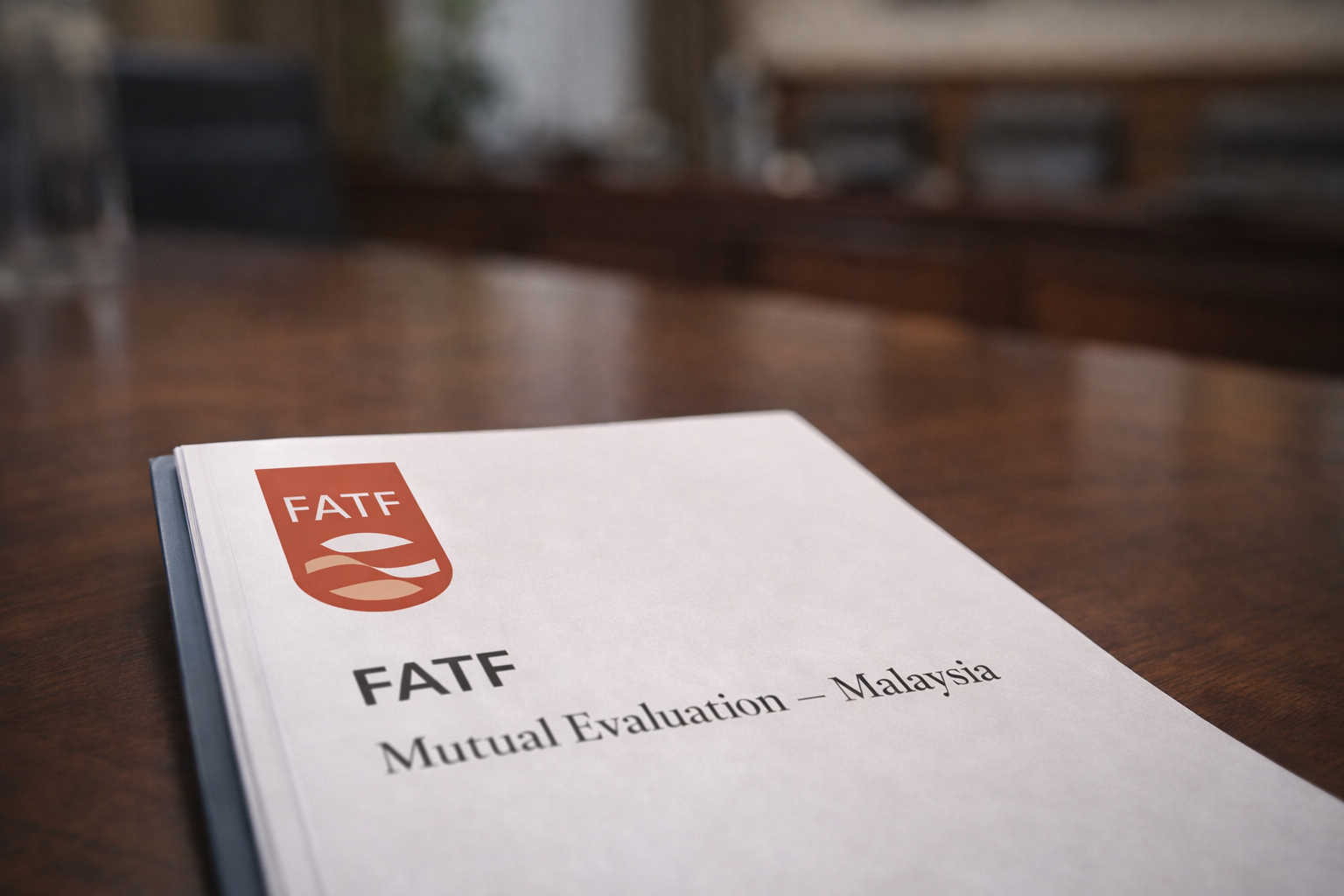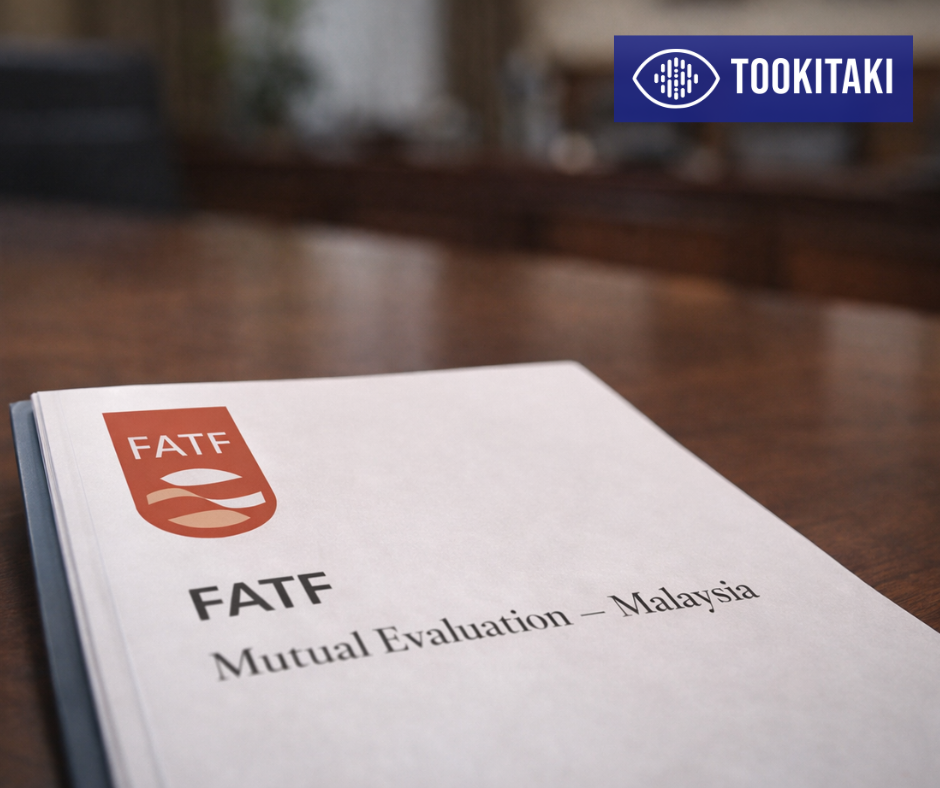New Payment Models: FATF's Response to Digital Transformation
.svg)
In the rapidly evolving world of finance, the boundaries of transaction methods are continually being pushed by technological innovations. The Financial Action Task Force (FATF), as the global money laundering and terrorist financing watchdog, plays a pivotal role in creating regulatory frameworks that adapt to these changes. With the digital age ushering in advanced payment models such as mobile payments, cryptocurrencies, and other blockchain technologies, there is a crucial need for these frameworks to evolve.
This blog explores the FATF's ongoing efforts to update its standards—particularly through the proposed revisions to Recommendation 16. These updates aim to tackle the complexities introduced by digital transformation in the financial sector. By maintaining safety, transparency, and inclusivity, the FATF strives to keep the global financial system secure amidst these advancements, ensuring that the same rigorous standards apply to both traditional and modern payment methods.
As we delve into these changes, it's important to recognize that the proposals discussed are still in draft form and subject to change following further consultation and feedback. This evolving nature highlights the FATF’s commitment to dynamic adaptation and thorough stakeholder engagement.
{{ cta-first }}
The Evolving Landscape of Digital Payments
The financial landscape is dramatically shifting, driven by the rapid adoption of digital technologies. This transformation is evident in the rising popularity of mobile payments, the integration of cryptocurrencies into mainstream finance, and the utilization of blockchain technology for secure and transparent transactions.
- Mobile Payments: Mobile payment platforms have seen exponential growth, offering convenience and speed. This surge is reshaping how consumers and businesses transact daily, moving beyond traditional banking infrastructures.
- Cryptocurrencies: Once a niche interest, cryptocurrencies have burgeoned into a significant financial force. They present unique challenges and opportunities for regulatory frameworks due to their decentralized nature, which can complicate the monitoring and tracing of transactions.
- Blockchain Technology: Beyond cryptocurrencies, blockchain technology is being explored for its potential to enhance transparency and efficiency in transactions. Its ability to provide a secure, immutable ledger is seen as a game-changer for transaction integrity.
However, these technologies also introduce significant challenges. They can obscure the origins and destinations of transfers, potentially easing the activities of those seeking to launder money or finance terrorism. The FATF has recognized these challenges, noting that the "technological features of digital payment services, such as increased anonymity and speed of transactions, can lead to a higher risk of misuse".
By adapting its recommendations, the FATF aims to mitigate these risks while fostering an environment where innovation can flourish securely and transparently. This balance is crucial for ensuring that the benefits of digital payments can be enjoyed universally without compromising global security.
FATF’s Historical Approach to Payment Models
The Financial Action Task Force (FATF) has a longstanding history of addressing the evolving challenges in financial transactions to combat money laundering and terrorism financing. Traditionally, FATF recommendations have focused on enhancing the regulatory framework around conventional banking systems, ensuring robust checks are in place to track and monitor financial flows.
Historically, FATF standards have demanded that financial institutions include detailed originator and beneficiary information on wire transfers to prevent and detect illicit financial flows. These measures were primarily designed for traditional banking transactions, which typically moved at a slower pace and through more transparent channels compared to today’s digital transactions.
As digital technology began to reshape the financial landscape, the FATF recognized the necessity to evolve its approach. This was not just to address the new technologies themselves but also to ensure that the regulatory framework remained effective in a changing world. The FATF has worked to stay ahead of trends, periodically reviewing its recommendations to ensure they are comprehensive and up-to-date. This includes adapting to changes in how financial transactions are conducted across different platforms, whether digital or traditional.
For instance, the shift from paper-based to electronic transactions brought the first major set of adaptations, where the FATF expanded its recommendations to include electronic money transfers. The emergence of digital payment methods and cryptocurrencies has similarly prompted a further evolution of these standards to address associated risks such as anonymity and cross-border transactions without adequate oversight.
The ongoing updates, as outlined in the draft revisions of Recommendation 16, reflect this adaptive approach. The document notes:
"The FATF has worked on updating R.16/INR.16 to adapt them to the changes in payment business models and messaging standards, ensuring that the FATF Standards remain technology-neutral and follow the principle of ‘same activity, same risk, same rules’".
By continuously updating its recommendations, the FATF not only responds to technological advancements but also anticipates future challenges, thereby ensuring a proactive rather than reactive approach to global financial regulation.
FATF’s Response to Digital Transformation
In response to the digital transformation sweeping across the financial landscape, the FATF has been proactive in refining its standards to align with new payment models and technologies. These efforts are encapsulated in the draft revisions to Recommendation 16, which aim to modernize the approach to ensuring transparency and security in financial transactions.
Technology Neutrality:
The principle of technology neutrality is central to the FATF’s revisions. This concept ensures that regulatory measures are effective regardless of the technology used. The goal is to maintain consistent oversight across all platforms, whether transactions are conducted via traditional banking, mobile payments, or blockchain technologies. This approach is reflected in the FATF's statement:
"There is a need for R.16/INR.16 to be updated to ensure that the FATF Standards remain technology-neutral and follow the principle of ‘same activity, same risk, same rules’".
Enhancing Data Quality and Transparency:
One significant focus of the revised Recommendation 16 is the enhancement of the quality and transparency of data involved in financial transactions. This includes clarifying the responsibilities of all parties in the payment chain and ensuring that detailed information about the originator and beneficiary is included and travels with the payment. The proposed changes aim to tackle the complexities introduced by the speed and anonymity potential of digital currencies and mobile payments. By requiring that comprehensive information accompanies each transaction, the FATF seeks to mitigate the risk of misuse for illicit activities.
Addressing the Challenges of Cryptocurrencies:
Cryptocurrencies pose specific challenges due to their potential for anonymity and their global reach, which can complicate the enforcement of national regulations. The FATF’s response includes proposals to integrate cryptocurrency transactions within the broader framework of financial oversight, ensuring that even these modern forms of currency are subject to the same rigorous standards as traditional financial transactions.
ISO 20022 Standard:
The adoption of the ISO 20022 financial messaging standard is another critical aspect of the FATF’s strategy. This standard promotes the uniformity of messages across the financial industry, enhancing the ability to track and monitor transactions efficiently and accurately. Implementing this standard is part of the FATF’s broader effort to ensure that innovations in payment systems do not outpace the capabilities of regulatory frameworks to manage risk.
These revisions represent a comprehensive effort by the FATF to address the multifaceted challenges posed by digital transformation in the financial sector. By proposing standards that adapt to and encompass new technologies, the FATF aims to safeguard the integrity of the global financial system while supporting technological advancement and innovation.
Ensuring Safety and Transparency
The digital age, while bringing unparalleled convenience and efficiency to financial transactions, also introduces significant risks that can undermine the security and integrity of the global financial system. The FATF’s draft revisions to Recommendation 16 are crafted with a keen focus on bolstering safety and transparency, crucial aspects that underpin secure financial operations worldwide.
Enhanced Transparency Requirements:
The revisions explicitly call for improved transparency in the collection and sharing of information related to financial transactions. This involves a more detailed requirement for the inclusion of originator and beneficiary information in all types of payment messages, whether domestic or cross-border. This push for greater transparency is aimed at reducing the anonymity that can facilitate illegal activities such as money laundering and terrorism financing. The document highlights:
"Improving the content and quality of basic originator and beneficiary information in payment messages should help achieve greater transparency and more efficient and effective compliance processes by financial institutions".
Preventing Money Laundering and Terrorism Financing:
To combat the use of digital and mobile payment systems for illicit purposes, the FATF emphasizes the need for rigorous compliance measures that adapt to the complexity and speed of modern transactions. The proposed revisions include mechanisms to monitor and screen transactions for suspicious activities continuously. This proactive surveillance is intended to detect and prevent the misuse of financial platforms at both national and international levels.
Balancing Regulation with Innovation:
A critical challenge for the FATF is to implement regulatory measures that ensure security without stifling innovation. The proposed guidelines are designed to be robust enough to deter and detect financial crimes but flexible enough to encourage technological advancements. This balance is crucial for fostering a healthy digital economy where security measures support, rather than inhibit, growth and innovation.
Global Cooperation and Consistency:
The FATF also stresses the importance of global cooperation and consistency in the application of financial regulations. By advocating for uniform standards and practices, such as those proposed in the ISO 20022 messaging standard, the FATF aims to create a seamless regulatory environment that transcends borders and reduces the opportunities for regulatory arbitrage.
{{cta-casestudy}}
Global Cooperation and Implementation Challenges
The FATF's efforts to revise Recommendation 16 also underscore the importance of global cooperation in the enforcement and implementation of financial regulations. Given the transnational nature of modern financial transactions, especially with digital and mobile technologies, no single nation can effectively combat financial crimes such as money laundering and terrorism financing on its own. This section explores the FATF's approach to fostering international collaboration and addresses the implementation challenges that may arise.
Enhancing International Collaboration:
The global nature of financial markets necessitates international cooperation not only in the creation of standards but also in their enforcement. The FATF promotes collaboration through its network of member countries, encouraging the sharing of information and best practices. This collaborative approach is crucial for tracking and managing cross-border transactions that may otherwise exploit differences in national regulatory regimes.
Harmonizing Regulatory Standards:
The FATF's revisions aim to harmonize regulatory standards across countries to prevent arbitrage opportunities that could arise from discrepancies in national laws. By advocating for the adoption of common standards, such as ISO 20022, the FATF facilitates a more uniform approach to financial regulation that enhances compliance efficiency and effectiveness globally.
Addressing Implementation Challenges:
Implementing new financial regulations can pose significant challenges, particularly in regions with varying levels of technological advancement and regulatory infrastructure. The FATF acknowledges these challenges and seeks to provide guidance and support to countries as they adapt to the new standards. This includes transitional arrangements and capacity-building initiatives to help countries meet these new requirements without undue strain.
Future Outlook and Adaptability:
Looking forward, the FATF recognizes that the financial landscape will continue to evolve, necessitating ongoing revisions to international standards. The flexibility and forward-looking nature of the FATF’s recommendations are designed to adapt to future changes in technology and market practices, ensuring that the regulatory framework remains robust and relevant.
By fostering a collaborative and harmonized international environment, the FATF not only enhances the effectiveness of financial regulations but also ensures that these regulations are equitable and do not place undue burdens on any single region or set of stakeholders.
As we conclude this exploration of the FATF's draft revisions to Recommendation 16, it is clear that the organization is deeply committed to adapting its policies to the realities of a rapidly evolving financial landscape. As these revisions are finalized and begin to take effect, they will undoubtedly shape the future of international financial transactions, striving to balance the scales between security and efficiency in an increasingly digital world.
Experience the most intelligent AML and fraud prevention platform
Experience the most intelligent AML and fraud prevention platform
Experience the most intelligent AML and fraud prevention platform
Top AML Scenarios in ASEAN

The Role of AML Software in Compliance









